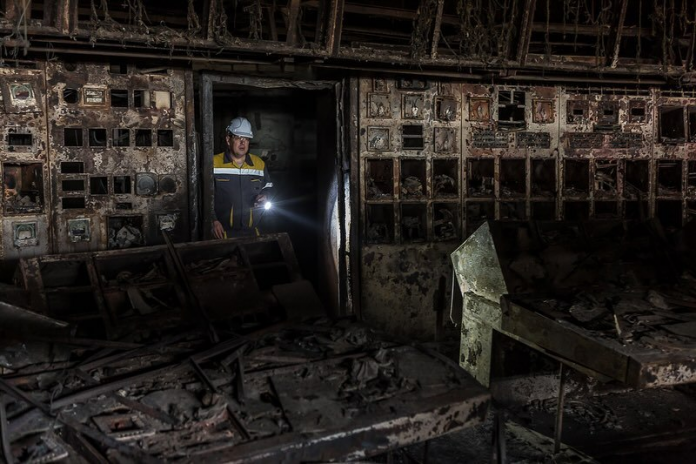Russia’s war on Ukraine has entered a new phase, the BBC says.
Drone and missile attacks from Russia on Ukraine’s energy infrastructure are increasingly frequent and signifcant – something Ukraine’ air defenses, buttressed as they have been by NATO, is unable to take.
Officials in Ukraine say they can „count on one hand” the thermal and hydro power plants across the country that are not yet badly damaged or totally destroyed. As Ukraine scrambles to repair what it can, and keep the electricity flowing to homes and industry, Russia shows no intention of stopping.
Last week saw hits to major facilities in Kiev and Kharkiv.
The Zmiiv thermal power plant, among the largest in Kharkiv Oblast, was hit on March 22 during one of the biggest attacks on the country’s energy infrastructure since the beginning of the full-scale invasion. The attack destroyed all its units and damaged supporting equipment.
Five Russian missiles struck the same spot, mangling turbines, generators and transformers and taking the plant offline. A week later, Russia targeted the city’s power plants again.
There have been six attacks on this plant since the start of the full-scale invasion – but March 22 shows a culmination, and also serves as a sinister testimony for just how accurate these strikes have become, as Russia’s army has gained experience and improved its techniques.
It took engineers a full year to repair one section of the plant, then two weeks after it was restarted Russia hit exactly the same spot.
Interestingly, BBC’s Kharkiv correspondent Sarah Rainsford reports that the heavy machinery dates back to the USSR, there are still Soviet labels on the ruins, and Moscow has the old blueprints of the plants – therefore, it should be easy to locate where to hit – especially when combined with intense attacks.
Since the March attack, nothing has flown from Kharkiv’s thermal power plants, and so the city brings in power from Western Ukraine. Local authorities are scrambling to minimize the impact and reduce the time homes and businesses are left in the dark. Residents have learned to charge their devices, and multiple power banks, as soon as the electricity comes on. They also keep reserves of water for drinking and washing. Regular blackouts have become a norm.
The Kharkiv metro is back working, albeit in fits and starts, and so are the traffic lights. But with an unreliable power supply that could get worse, businesses are creating their own solutions.
Kharkiv is a major publishing hub and Oleksandr Popovich, the boss of a large printing firm, says for weeks they have been relying on three generators.
„Unfortunately, I can’t fix the electricity”, says Popovich. „But everyone has to do their own job. Mine is to produce books until our victory. We must keep working. We must give people in Ukraine the chance to read new books.”
Ukraine’s commander-in-chief, Gen Oleksander Syrskyi, said at the weekend the situation along sections of the front line had „significantly worsened”. He thinks Russia is aiming for a victory by the symbolic date of Victory Day in May.
Meanwhile, Ukrainians are really suffering, as the law limiting how long a soldier must fight has been removed by the Ukrainian parliament. Ammunition begins to run dry, as the US no longer supports Ukraine financially as it once did.
The air strikes often include the same Iranian-made Shahed drones launched by Tehran at Israel.

















